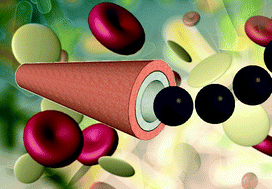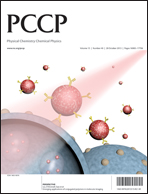Blood electrolytes exhibit a strong influence on the mobility of artificial catalytic microengines†
Abstract
The developments in biomedical sciences foresee the inclusion of self-propelled catalytic micromotors for in vivo therapeutic strategies in the near future. We show here that blood electrolytes, such as Na+, K+, Ca2+, Cl−, SO42− and phosphates, decrease the mobility of the Pt catalyzed tubular microjets. This effect is significant and in many cases, the microjets are completely disabled at physiologically relevant concentrations of the ions. A strategy to counterbalance this negative influence is suggested. These findings have a strong influence in the field of bubble-propelled artificial micromotors, where applications in blood are often envisioned.


 Please wait while we load your content...
Please wait while we load your content...